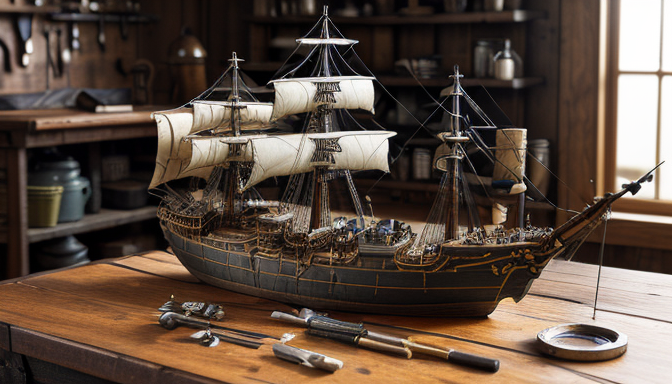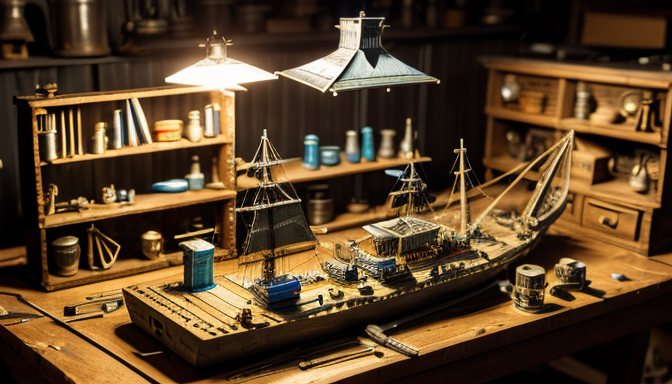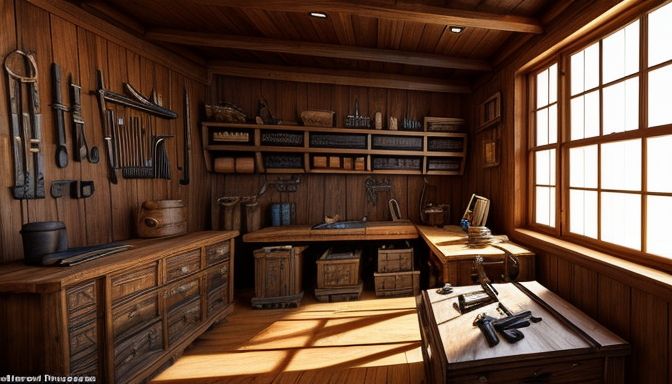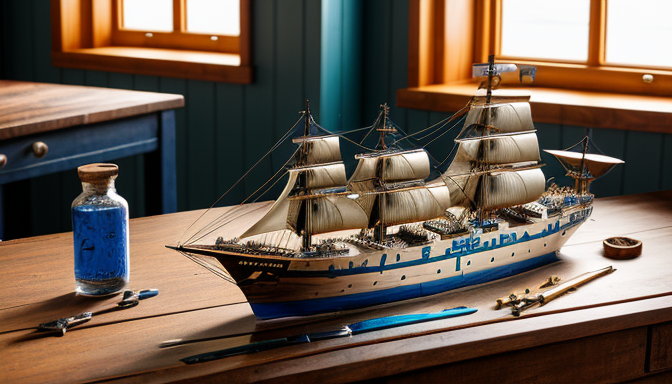From Novice to Pro: Mastering Model Ship Techniques
Building model ships is not just a hobby; it’s an adventure that takes you through the waves of creativity and craftsmanship. Whether you’re a complete novice or someone with a few ships under your belt, mastering the art of model shipbuilding can be both exciting and rewarding. This journey begins with understanding the essential tools and materials needed to bring your maritime dreams to life. Imagine holding a finely crafted wooden hull in your hands, the scent of fresh wood filling the air, as you prepare to transform it into a stunning vessel.
To kick-start your shipbuilding adventure, you’ll need a few key tools. Think of them as your trusty companions on this voyage. Here’s a quick overview of what you’ll need:
- Cutting Tools: Precision knives and saws for shaping your materials.
- Adhesives: Strong glues that can withstand the test of time.
- Paints and Brushes: To add that personal touch and realism to your ships.
- Measuring Tools: Rulers and calipers to ensure every piece fits perfectly.
As you gather your tools, consider the materials too. From wood and plastic to metal fittings, each choice you make will affect the final look of your model. And let’s not forget about the collectors’ showcases—the ultimate goal for many builders. Imagine displaying your meticulously crafted ship, a testament to your skills, pride, and passion. So, are you ready to set sail on this incredible journey? Let’s dive deeper into the world of model shipbuilding!
Essential Tools for Model Shipbuilding
Embarking on the journey of model shipbuilding is like setting sail on a vast ocean of creativity and craftsmanship. To navigate these waters successfully, you’ll need a reliable toolkit. First and foremost, a precision knife is your best friend. It’s essential for making clean cuts and intricate designs in wood and plastic. Pair it with a cutting mat to protect your work surface and maintain sharp blades.
Next up, let’s talk about adhesives. A good model shipbuilder knows that not all glues are created equal. For wood, a high-quality wood glue works wonders, while plastic models benefit from specialized plastic cement. And don’t forget about clamps! These handy tools help hold pieces together while the glue sets, ensuring a strong bond.
As you delve deeper into the craft, consider investing in a set of files and sandpaper. These tools are crucial for smoothing rough edges and achieving that polished finish that makes your model stand out. Additionally, having a paintbrush set and acrylic paints will allow you to add those stunning details and bring your ship to life.
Lastly, for those serious about their craft, a workbench equipped with good lighting and storage for your tools can make a world of difference. It’s where the magic happens! So, gather your tools, and let your imagination set sail!

Advanced Techniques for Detail and Finishing
Once you’ve laid the groundwork for your model ship, it’s time to elevate your craftsmanship to a whole new level. Advanced techniques are what separate the novices from the pros, and they can truly make your ship come alive. Imagine your model ship sailing through the seas of imagination, with every detail meticulously crafted to perfection. To achieve this, you’ll need to focus on a few key areas: detailing, finishing, and presentation.
First up, let’s talk about detailing. This is where you can really let your creativity shine. Adding features like rigging, sails, and even tiny crew figures can make your model ship look like it’s ready to set sail. Use fine tools such as tweezers and precision knives to handle small parts, ensuring every piece is in place. Don’t forget about the importance of paint and weathering; a well-applied paint job can transform your ship from a simple model to a stunning replica. Consider using an airbrush for a smooth finish, and experiment with washes to add depth and realism.
Next, finishing touches can elevate your ship’s appearance dramatically. Applying a clear coat not only protects your hard work but also enhances the colors. You might even want to explore decals or custom graphics for that personal touch. Additionally, think about how you’ll display your masterpiece. A well-designed display case can protect your model while showcasing its beauty. Remember, the presentation is just as important as the construction itself!
In conclusion, mastering these advanced techniques will not only enhance your model ship but also provide an immense sense of satisfaction. So gather your tools, unleash your creativity, and watch as your ship transforms into a breathtaking piece of art!
Frequently Asked Questions
- What tools do I need to start building model ships?
To kick off your model shipbuilding adventure, you’ll need some essential tools. Think of a good quality hobby knife, a cutting mat, precision tweezers, and a reliable glue. Don’t forget a set of fine paintbrushes and sandpaper for those finishing touches!
- How long does it take to build a model ship?
The time it takes can vary wildly based on your skill level and the complexity of the model. A simple kit might take a weekend, while more intricate designs can take weeks or even months. It’s like cooking a gourmet meal; the more details you add, the longer it takes!
- Can beginners really achieve professional-looking results?
Absolutely! With patience and practice, even beginners can create stunning models. Start with the basics, follow tutorials, and don’t shy away from experimenting. Remember, every expert was once a beginner!
- What materials are best for building detailed ships?
For detailed ships, consider using hardwoods, plastic, or metal parts. Each material has its own charm and can bring your model to life. Think of it like choosing the right ingredients for your favorite dish!






